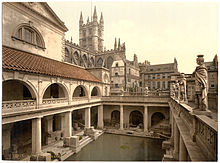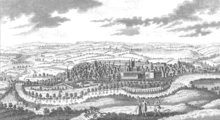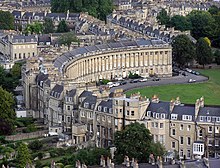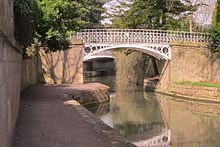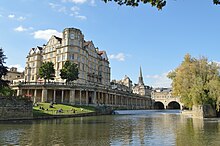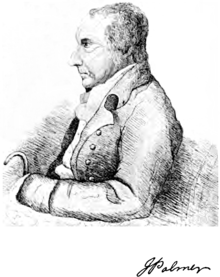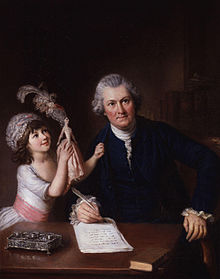History
The following is a timeline of the history of the city of Bath , Somerset , England.
Prehistory
1st to 5th centuries
See also: Aquae Sulis
c. 60s – First Roman temple structures built, around the hot water springs; completed by 76.
2nd century
Early: Baths extended.
Late: Baths vaulted.
3rd century – By this time, Bath city walls are built for defence.
300–350 – Evidence for Christians in Bath.
5th century – Following the end of Roman rule in Britain , Bath is largely abandoned. 6th to 10th centuries
516 – Battle of Badon : A famous battle against the Saxons , where a progenitor of King Arthur is said to have been victorious; perhaps on Bathampton Down .
577 – Battle of Deorham : Bath is captured by the Saxons and, being north of the River Avon , then falls within the Saxon petty-kingdom of the Hwicce .
628 – Following the Battle of Cirencester , the Hwicce come under the rule of the kingdom of Mercia .
676 – Abbess Berta founds a convent under the protection of Osric, king of the Hwicce .
757 – Cynewulf of Wessex grants land in Bath to monks of St Peter.
781 – Offa of Mercia takes control of the monastery from the Bishop of Worcester.
878 – Bath becomes a royal borough (burh ) of Alfred the Great , in his kingdom of Wessex (and also in the county of Somerset).
c. 900 – Market active.
973 – 11 May (Whitsunday): Edgar , King of England 959–975, is crowned and anointed with his wife Ælfthryth at Bath Abbey by Dunstan , Archbishop of Canterbury. The Church of St Swithin, Walcot , is founded at about this date.
c. 980 – Ælfheah becomes abbot of Bath. 11th to 17th centuries
1087 – Town, Abbey and mint pass to John of Tours .
1090 – John of Tours, Bishop of Wells , moves the episcopal seat to Bath, giving it city status .
Early 12th century? – King's Bath built.
1102 – Bath fair active.
1137 – Major fire.
1148–1161 – Abbey consecrated between these dates.
c. 1174 – St John's Hospital founded.
1273 – Old Bridge extant.
1285 – Church of St Michael's Within built in St John's Hospital .
c. 1333 – Monks of the abbey establish a weaving trade in Broad Street.
1371 – Market mentioned in charter.
c. 1435 – Hospital of St Catherine established.
1482 – "Sally Lunn's House " built.
c. 1495 – St Mary Magdalen, Holloway, built as a chapel to a leper's hospital.
1499 – Abbey found derelict by Oliver King , Bishop of Bath and Wells , who begins its reconstruction. Roman Baths with Abbey beyond as at c.19001533 – Rebuilding of Abbey substantially completed by this date.
1539 – January: Dissolution of the Monasteries : Abbey surrendered.
1552
1572
The roofless Abbey is given to the corporation of Bath for restoration as a parish church.
Dr. John Jones makes the first public endorsement of the medicinal properties of the city's water.
1576 – Queen's Bath built.
1578 – Drinking fountain installed in the Baths.
1590 – Bath chartered (city status confirmed) by Elizabeth I .
1597 – Deserving poor given free use of the mineral water.
1608 – Bellott's Hospital established.
1613 and 1615 - Anne of Denmark, wife of James VI and I, visits Bath for her health
1616 – Abbey Church consecrated.
1625–1628 – Guildhall rebuilt.
1643 – 5 July: Battle of Lansdowne fought near the city.
1657 – Regular coach service from London.
1676 – Dr. Thomas Guidott publishes A discourse of Bathe, and the hot waters there. Also, Some Enquiries into the Nature of the water , the first published account of the medicinal properties of the city's water.
1677 – West Gate pub in business.
1680 – Supposed origin of the Sally Lunn bun .
1687 – Mary of Modena , queen consort of James II of England , visits in the hope that Bath waters would aid conception; by the end of the year she is pregnant with James Francis Edward Stuart . 1700s
View of Bath, 18th century 1702–1703 – Queen Anne visits.
1704 – First pump-room built; Richard "Beau" Nash is appointed Master of Ceremonies.
1705 – First theatre in the city built.
1707 – Bath Turnpike Trust established.
1708 – Harrison's Assembly Rooms, with a riverside walk, open.
1711 – Bluecoat school founded as a charity.
1712 – March: Ralph Allen appointed postmaster.
1715 – Church of St Michael's Within in St John's Hospital rebuilt to the design of William Killigrew.
1720 – Ralph Allen begins to farm the Cross and Bye Posts in the south west of England.
1717 – Approximate date: Green Street developed.
1721 – Bluecoat school opens.
1724 – James Leake (bookseller) in business.
1725–1727 – Guildhall extended.
1725
1726
1727–1728 – John Wood, the Elder , executes his first private commission in Bath, a new building for St John's Hospital .
1727–1736 – Beaufort Square laid out by John Strahan .
1727
1728
1728–1736 – Queen Square laid out by John Wood, the Elder .
1730s – Parade Gardens laid out.
1731 – A tramroad is opened to carry building stone from Ralph Allen 's Combe Down mine through his Prior Park estate down to the Kennet and Avon Canal .
c. 1733
1734
1735
1738 – Royal visit by Frederick, Prince of Wales with Princess Augusta , marked by erection of an obelisk in Queen Square.
1739
c. 1741 – North Parade built by John Wood, the Elder .
1742
1743–1749 – South Parade built to the design of John Wood, the Elder .
1744
1745 – Beau Nash forced to retire as Master of Ceremonies due to anti-gambling laws.
1747 – Bath Pauper Scheme originates.
1750
1751 – Pump Room enlarged, truncating the King's Bath.
1752 – King Edward's School rebuilt in Broad Street.
1754
1754–1755 – North and South Gates demolished (West Gate demolished c. 1776).
1755
Royal Crescent , climax of the Woods' BathBath Assembly Rooms Thomas Rowlandson , Comforts of Bath – The Pump Room (1798)1800s
Map of the city, drawn in 1818. 1800
North side of Pulteney Bridge collapses in a flood.
S. W. Simms (bookseller) in business.
Approximate date:
1801
January: Jane Austen becomes resident in Bath when her father retires here; she will remain until summer 1806 living mostly in the new-built Sydney Place.
1 May: Kennet and Avon Canal opens from Bath to Devizes (completion of the locks at the latter place at the end of 1810 creates through inland water communication to London). Footbridges over Kennet and Avon Canal in Sydney Gardens 1802 – Balloon ascents from Sydney Gardens .
1805
1806 – East wing of Grand Pump Room completed.
1808 – New houses in Sydney Place completed to the design of John Pinch the elder .
1810
Lancasterian Free School established.
Union Street completed.
1812 – Jewish Burial Ground, Combe Down opened.
1813 - Claverton Pumping Station opens, allowing the Bath locks on the Kennet and Avon Canal to be used in periods of low rainfall.
1815
1816 – 8 January: Third Bath Philosophical Society formed.
1817
Royal visit by Queen Charlotte .
Atkinson & Tucker (booksellers) in business.
1818 – Bath Gas Light Company established.
1819 – Masonic Hall dedicated.
1821 – 6 February: Original Assembly Rooms in Terrace Walk destroyed by fire.
1822
1823 – Jolly & Son , drapers, established.
1824 – Bath Royal Literary and Scientific Institution founded (given Royal status 1837).
1825
1826
1827
1829 – New basin at baths completed.
1830
1831 – Jolly's department store opens as The Bath Emporium.
1832 – Sydney Buildings constructed.
1833–1834 – George Phillips Manners restores the Abbey, replacing the pinnacles.
1834–1837 – St Michael's Without church rebuilt to the design of George Phillips Manners .
1834 – Stothert, Rayne & Pitt acquire the Newark Iron Foundry.
1836
1837 – Victoria Column erected.
1839 – Isaac Pitman moves to Bath.
1840
1841
1846 – City authorised to provide drinking water from springs at Bathampton and Batheaston .
1847 – Commercial Reading Room and Tottenham Library founded.
1851 – Kingswood School moves to Bath.
1852 – Bath School of Art founded.
1854 – Post Office in York Buildings, George Street (1750s).
1855
February: Bath Natural History and Antiquarian Field Club established by Leonard Jenyns .
Bath Quartet Society established.
Corn market built in Walcot Street.
1856 – J. B. Bowler, engineer and carbonated drink manufacturer, in business.
1859–1860 – New Bluecoat school built.
1861–1863 – St John the Evangelist Roman Catholic Church in South Parade is built to the design of Charles Francis Hansom .
1861 – Guildhall Market built.
1862 – 18 April: A major fire causes the Theatre Royal to be rebuilt.
1863 – Widcombe ("Halfpenny") footbridge first built over the Avon in wood.
1864
1865
1867
Alexander Graham Bell rigs up a telegraph line in Bennett Street while teaching at Somerset College.James Irvine records remains of the Roman temple of Sulis Minerva .
1869–1885 – Excavations of Roman Baths by Maj. C. E. Davis , the city architect.
1869
1870–1873 – St Andrew's Church built to the design of George Gilbert Scott .
1874
1875
1877 – 6 June: Widcombe footbridge collapses, killing eleven, causing it to be rebuilt as a wrought-iron lattice girder.
1878
1880
1881 – Population: 52,557.
1882 – Holburne Museum fine art collection bequeathed to the city.
1883 – Queen's Bath largely demolished revealing a Roman circular bath.
1886 – First telephone exchange.
1887 – Botanical Gardens opened in Royal Victoria Park .
1888 – Bath Photographic Society formed.
1889
1890 – Electricity generating station begins operation.
1891 – Bath Fire Brigade and Ambulance Service established.
1892 – Technical training begins, origin of City of Bath Technical School and Bath College of Domestic Science .
1893 – Holburne Museum opens in Charlotte Street.
1894 – Major floods.
1896 – April: Bath Municipal Technical College and Bath City Secondary School established in a new north extension of the Guildhall.
1897
18 October: Victoria Art Gallery foundation stone laid to commemorate the diamond jubilee of Queen Victoria.
Henrietta Gardens laid out to commemorate the diamond jubilee of Queen Victoria.
Roman Baths and associated Concert Room designed by J. M. Brydon are opened to the public. 1900s
Empire Hotel with Pulteney Bridge beyond1900
Silcox Son & Wicks, furnishers, established.
May: Victoria Art Gallery and Reference Library opens.
New (redbrick) houses for the working classes erected in Dolemeads.
1901
1902 – 25 July: Horse tram system closes for electrification, being temporarily replaced by horsebuses .
1904 – 2 January: Bath Electric Tramways Company begins operating.
1905 – 12 December: Midland Bridge , a replacement lattice-girder bridge over the Avon, is opened.
1907 – Bath School of Pharmacy established.
1909
1910 – Jubilee Hall Cinema operating in Assembly Rooms .
1911 – 9 November: Twerton and parts of Charlcombe and Weston are incorporated within the city boundary under terms of the Local Government Act 1888 .
1915
1916
1920 – Bath Tramways Motor Company set up to operate motor buses.
1923
Roman hot plunge baths excavated.
Kingston Baths demolished.
1925
Bath Corporation Act includes conservation powers.
Lansdown Water Tower built.
1927
16 May: New Post Office and Telephone Exchange opens in Northgate Street.
3 November: City war memorial dedicated.
1929
1931 – October: Assembly Rooms purchased by the Society for the Protection of Ancient Buildings with funds provided by Ernest Cook and transferred to the National Trust for restoration and preservation.
1932
1934 – Bath Preservation Trust founded.
1936–1941 – Haile Selassie , deposed Emperor of Ethiopia , spends most of his exile in Bath.
1936 – North Parade Bridge rebuilt in stone-faced reinforced concrete.
1937
Bath Corporation Act includes additional conservation powers.
A school crossing patrol ("lollipop lady") is appointed, one of the earliest in the UK.
1938
15 October: Assembly Rooms reopened after restoration.
Kilowatt House on Claverton Down , a unique example of modernist architecture in the city, is completed to the design of Mollie Taylor as a residence for electrical engineer Anthony Greenhill.
1939
1942 – 25–27 April: Bath Blitz : Three German aerial bombing raids as part of the "Baedeker Blitz " kill 417; among the buildings destroyed or badly damaged are the newly restored Assembly Rooms , St Andrew's church and All Saints Chapel. City centre in 1958, still with signs of the Bath Blitz 1944 – March–November: John Betjeman is assigned to a wartime job working on publicity for the Admiralty at the requisitioned Empire Hotel .
1945 – Town planner Patrick Abercrombie produces A Plan for Bath for post-war reconstruction.
1946 – October: City of Bath Bach Choir founded.
1948
1951
1955
Bath Terraces Scheme introduced to conserve the city's historic architecture.
Covered reservoir opens on Bathampton Down .
1958 – Bus station opened in Manvers Street.
1960 – December: Major floods.
1961 – Bath Crematorium opens.
1963
1965–Easter 1983 – Excavations of Roman Baths under the direction of Barry Cunliffe , including areas beneath the Grand Pump Room and in the sacred spring.
1965 – Town planner Colin Buchanan publishes Bath: a planning and transport study .
1966
1969–1972 – Original Southgate Shopping Centre built to the design of Owen Luder .
1969 – J. B. Bowler, engineer and carbonated drink manufacturer, ceases business.
1970
1971
25 April: Population: 84,670.
New semicircular Pulteney Weir in the Avon designed by Neville Conder is completed.
Bath gasworks ceases production.
1973 – 30 March: Beaufort Hotel (later Hilton Bath City Hotel) opens in Walcot Street.
1974
1975
1978 – Spa baths closed due to contamination.
1979
1981 – Bath Fringe Festival and Bath Half Marathon begin.
1986
1987
1989 – 11 January: Closure of Stothert & Pitt is announced.
1991
21 April: Population: 78,689.
Summer: Major fire at Prior Park .
1993
1995 – Bath Literature Festival begins.
1996 – 1 April: City becomes part of the Bath and North East Somerset non-metropolitan district. Charter Trustees of the City of Bath established.
1997 – Ustinov Studio (theatre) built.
1999 – 15 November: Bath FM launches as an independent local radio station, broadcasting until 24 March 2010. 2000s
Thermae Bath Spa Elizabeth Park in the Bath Western Riverside residential development, opened in 2019 Births
John Palmer (postal innovator) at age 75c.953 – Ælfheah of Canterbury , archbishop (d. 1012)
c.1080 – Adelard of Bath , natural philosopher (d. c.1152)
1704 – John Wood, the elder , architect (d. 1754)
1707 – Benjamin Robins , military engineer (d. 1751)
1728 – 25 February: John Wood, the younger , architect (d. 1782)
1732 – David Hartley, the younger , statesman and inventor (d. 1813)
c.1738 – John Palmer , architect (d. 1817)
1742 – John Palmer , postal innovator and theatre owner (d. 1818)
1744 – 31 May: Richard Lovell Edgeworth , politician, writer and inventor (d. 1817)
1751 – Honora Sneyd , educationalist (d. 1780)
1754 – September: Elizabeth Ann Linley , soprano (d. 1792)
1771 – Frances Brett Hodgkinson , actress in the United States (d. 1803)
1773 – 14 January: William Amherst, 1st Earl Amherst , diplomat and Governor-General of India (d. 1857)
1780
3 June: William Hone , libertarian writer, satirist and bookseller (d. 1842)
Approximate date: Daniel Terry , actor and playwright (d. 1829)
1790 – 19 December: William Parry , Arctic explorer (d. 1855)
1794
1796 – John Pinch, the younger , architect (d. 1849)
1807 – Robert Montgomery , poet (d. 1855)
1808 – 15 July: Henry Cole , civil servant and inventor (d. 1882)
1810 – 2 April: Edward Vansittart Neale , Christian socialist (d. 1892)
1816 – 17 March: Abraham Marchant , Mormon leader (d. 1881)
1820 – 22 June: Charles Lowder , Anglo-Catholic priest (d. 1880)
1835 – 2 April: William Eden Nesfield , domestic revival architect (d. 1888)
1840 – 29 July: James Dredge, the younger , civil engineering journalist (d. 1906)
1846 – 26 October: C. P. Scott , newspaper editor (d. 1932)
1872 – Edith Garrud , née Williams, pioneer martial artist and suffragist (died 1971)
1880 – 28 October: Thomas Ley , politician in Australia and murderer (d. 1947)
1881 – 7 July: Sidney Horstmann , engineer and businessman (d. 1962)
1888 – 15 June: Martin D'Arcy , Catholic intellectual (d. 1976)
1896 – 7 January: Arnold Ridley , playwright and actor (d. 1984)
1898 – 17 June: Harry Patch , supercentenarian and last surviving combat soldier of World War I (d. 2009)
1901 – 29 September: Caryll Houselander , Catholic lay mystic (d. 1954)
1903 – 17 October: G. E. Trevelyan , novelist (d. 1941)
1908 – 27 March: Semprini , conductor (d. 1990)
1935 – 24 March: Mary Berry , food writer and presenter
1943 – 3 April: Jonathan Lynn , stage and screen director, producer, writer and actor
1945 – 17 December: Jacqueline Wilson , née Aitken, children's fiction writer
1947 – 4 October: Ann Widdecombe , politician
1964
1973
1974 – 18 January: Princess Claire of Belgium , née Coombs, princess consort See also
References
Aston, Mick . "The Bath Region, from Late Prehistory to the Middle Ages" (PDF). Bath Spa University. Archived from the original (PDF) on 19 September 2016. Retrieved 27 July 2016.Geoffrey of Monmouth (1136). Historia Regum Britanniae ^ "Saxon Bath" . The Mayor of Bath. Archived from the original on 1 November 2015. Retrieved 27 July 2016.
^ Letters, Samantha (2005), "Somerset" , Gazetteer of Markets and Fairs in England and Wales to 1516 , Institute of Historical Research , Centre for Metropolitan History
Anglo-Saxon Chronicle "Vikings and Anglo-Saxons" . British History Timeline . BBC . Retrieved 12 September 2013.^ Forsyth, Michael (2003). Bath . Pevsner Architectural Guides . New Haven: Yale University Press. ISBN 978-0-300-10177-5
^ Spence, Cathryn (2012). Water, History & Style – Bath: World Heritage Site . Brimscombe Port: The History Press. ISBN 978-0-7524-8814-1
"Bath Abbey" . Sacred Destinations . Retrieved 1 August 2016.^ Tymms, Samuel (1832). "Somersetshire" . Western Circuit . The Family Topographer: Being a Compendious Account of the ... Counties of England. Vol. 2. London: J. B. Nichols and Son. OCLC 2127940 .
^ Chisholm, Hugh , ed. (1911). "Bath (England)" . Encyclopædia Britannica
^ "Royal National Hospital for Rheumatic Diseases" . Bath Heritage. Retrieved 13 January 2013.
^ "Bath". Great Britain (7th ed.). Leipzig: Karl Baedeker. 1910. hdl :2027/mdp.39015010546516 .
^ Wood, John (1765). Description of Bath
Townsend, George Henry (1867). "Bath" . A Manual of Dates (2nd ed.). London: Frederick Warne & Co.^ Buchanan, R. A. (1969). The Industrial Archaeology of Bath . Bath University Press. ISBN 0-900843-04-7
^ Peach, R. E. M. (1893). Street-Lore of Bath
^ Maxted, Ian (2006). British Book Trades: Topographical Listings. Somerset
Kaufman, Paul (1967). "The Community Library: A Chapter in English Social History". Transactions of the American Philosophical Society . 57 (7): 1–67. doi :10.2307/1006043 . JSTOR 1006043 .
^
Haddon, John (1982). Portrait of Bath . London: Robert Hale. ISBN 0-7091-9883-3
Mortimer, Roger; Onslow, Richard; Willett, Peter (1978). Biographical Encyclopaedia of British Racing . London: Macdonald and Jane's. ISBN 0-354-08536-0
^ Headley, Gwyn; Meulenkamp, Wim (1999). Follies, grottoes & garden buildings . London: Aurum Press. ISBN 978-1-85410-625-4
^ Historic England . "Masonic Hall formerly Theatre (443204)" . Images of England the original on 2 November 2012.
Historic England (15 October 2010). "1–30 The Circus (1394142)" . National Heritage List for England ^ "Bath (England) Newspapers" . Main Catalogue . British Library. Retrieved 12 September 2013.
^ Toone, William (1835). Chronological Historian ... of Great Britain
^ Page, William, ed. (1906), "Romano-British Somerset: Part 2, Bath" , History of the County of Somerset , Victoria County History , vol. 1, University of London, Institute of Historical Research
^ Green, Mowbray Aston (1904). Eighteenth Century Architecture of Bath OCLC 1718577 . OL 6953596M .
"History" . Bath: Theatre Royal. Retrieved 13 February 2011.Rules and orders of the Society Instituted at Bath, for the Encouragement of Agriculture, Arts, Manufactures, and Commerce . 1777. OCLC 85861288 ."About The Museum" . Museum of Bath at Work . Retrieved 26 July 2016.Torrens, Hugh (1990), "The Four Bath Philosophical Societies, 1779–1959", Proceedings of the 12th Congress of the British Society for the History of Medicine , Bath
Thicknesse, Phillip (1780). The Valetudinarians Bath guide, or, The means of obtaining long life and health Herschel, W.; Watson, Dr. (1781). "Account of a Comet, By Mr. Herschel, F.R.S.; Communicated by Dr. Watson, Jun. of Bath, F.R.S". Philosophical Transactions of the Royal Society 71 . London: 492–501. Bibcode :1781RSPT...71..492H . doi :10.1098/rstl.1781.0056 . S2CID 186208953 .
Historic England (15 October 2010). "The Cross Bath (1394182)" . National Heritage List for England Historic England . "Numbers 1 to 12 (442847)" . Images of England the original on 18 October 2012.Historic England (15 October 2010). "South Colonnade at Grand Pump Room (1395196)" . National Heritage List for England Historic England (15 October 2010). "North Colonnade at Grand Pump Room (1395195)" . National Heritage List for England "Key objects of the collection" . Bath: Roman Baths. Retrieved 27 July 2016.Historic England (15 October 2010). "1–8 Bath Street (1394178)" . National Heritage List for England ^ Handy Guide to Bath OCLC 12987834 . OL 17860578M .
Historic England (15 October 2010). "Grand Pump Room (1394019)" . National Heritage List for England ^ Wright, G. N. (1864). The Historic Guide to Bath . Bath: R. E. Peach, printer. OL 25319615M .
^ Winchester, Simon (2001). The Map That Changed the World: William Smith and the Birth of Modern Geology ISBN 0-14-028039-1
The Trial of Jane Leigh Perrot . 1800.^ Clegg, James, ed. (1906). International Directory of Booksellers and Bibliophile's Manual
Roth, Cecil (2007). "Bath". In Berenbaum, Michael; Skolnik, Fred (eds.). Encyclopaedia Judaica . Vol. 3 (2nd ed.). Detroit: Macmillan Reference USA. p. 210.^ Clew, Kenneth R. (1985). The Kennet & Avon Canal: an illustrated history (3rd ed.). Newton Abbot: David & Charles. ISBN 0-7153-8656-5
Allsop, Niall (1987). The Kennet & Avon Canal 5 . ISBN 978-0-948975-15-8
^ Annals of Bath, from the year 1800 to the passing of the new municipal act OCLC 5258530 . OL 23277637M .
Historic England . "Cleveland Baths (Grade II*) (1396146)" . National Heritage List for England ^ Wallis, Peter, ed. (2008). Innovation and discovery: Bath and the rise of science . Bath Royal Literary and Scientific Institution ; William Herschel Society. ISBN 978-0-948975-82-0
"Company: Jolly & Son Ltd" . The House of Fraser Archive . University of Glasgow Archive Services. Retrieved 29 December 2024."History" . Bath Royal Literary and Scientific Institution. Retrieved 13 September 2013.Historic England . "Cleveland Bridge (442453)" . Images of England the original on 22 October 2012."Royal Victoria Park, Bath, Bath, England" . Parks & Gardens UK . Parks & Gardens Data Services. 27 July 2007. Archived from the original on 1 March 2014. Retrieved 26 July 2016.Major, S. D. (1879). Notabilia of Bath
"Destruction of Bath Theatre" . Bath Chronicle and Weekly Gazette . 24 April 1862. Retrieved 18 October 2015 – via British Newspaper Archive ."Bath". Handbook for Travellers in Wiltshire, Dorsetshire, and Somersetshire hdl :2027/uc1.l0098676091 .
"Photographic Societies of the British Isles and Colonies" . International Annual of Anthony's Photographic Bulletin . New York: E. & H. T. Anthony & Company . 1891.Hobbs, P.R.N; Jenkins, g.O. "Appendix 1 Major recorded landslides in the Bath area In: Bath's 'foundered strata' - a re-interpretation Physical Hazards Programme Research Report OR/08/052" (PDF). British Geological Survey. Retrieved 7 September 2016.
Proceedings of the History of Bath Research Group . 3 :15–18.
"Small Talk of the Week" . The Sketch "Bath Historical Pageant" . The Redress of the Past . Retrieved 9 November 2019."A Potted History of the RUH" . Royal United Hospital. Retrieved 13 September 2013.Rothnie, Niall (1983). The Bombing of Bath: the German air raids of 1942 . Bath: Ashgrove. ISBN 0-906798-29-9
Wilson, A. N. (2007). Betjeman . London: Arrow Books. ISBN 978-0-099-49837-7 Abercrombie, Patrick; Owens, John; Mealand, H. Anthony (1945). A Plan for Bath . London: Pitman.
"Brutal Bath" (PDF). Museum of Bath Architecture. 2014. Retrieved 30 November 2018.Fergusson, Adam (1973). The Sack of Bath: a record and an indictment . Salisbury: Compton Russell. ISBN 978-0-85955-002-4 ^ "Population Statistics" . Bath and North East Somerset District Council. Archived from the original on 13 May 2012. Retrieved 12 September 2013.
Britten, Elise (15 December 2019). "Looking back on the day an IRA bomb exploded in Bath city centre" . SomersetLive . Reach. Retrieved 27 March 2022.
Dean, Malcolm (22 July 2017). "Maggie Roper". The Guardian
Bath and North East Somerset Council, Bath and North East Somerset Cultural Strategy 2011-2026
"Bath Festival of Children's Literature" . Archived from the original on 11 October 2007. Retrieved 12 September 2013."Bath" . BANES 2011 Census Ward Profiles. Retrieved 2 May 2015."Bath tipper truck crash kills child and three adults" . BBC News Barltrop, Paul (25 August 2023). "Bath air quality improves since introduction of clean air zone" . BBC News . Retrieved 26 August 2023.
Bibliography
Christopher Anstey , author of The New Bath Guide , with his daughter, painted by Bath resident artist William Hoare c.1777Published in 18th century
Published in 19th century
1800s-1840s
1850s-1890s
"Bath" . Bradshaw's Descriptive Railway Hand-Book of Great Britain and Ireland John Earle (1864). A guide to the knowledge of Bath, ancient and modern "Bath (Somerset)" . Where Shall We Go?: A Guide to the Healthiest and Most Beautiful Watering Places in the British Islands (4th ed.). Edinburgh: A. and C. Black . 1866.William Henry Overall , ed. (1870). "Bath, Somerset" . Dictionary of Chronology . London: William Tegg. OCLC 2613202 .Smith, George; Thackeray, William Makepeace (July 1873). "Some Literary Ramblings about Bath: III" . Cornhill Magazine James Tunstall (1876). Rambles about Bath and its neighbourhood OCLC 12987741 . OL 6919886M . John Parker Anderson (1881). "Somersetshire: Bath" . Book of British Topography: a Classified Catalogue of the Topographical Works in the Library of the British Museum Relating to Great Britain and Ireland . London: W. Satchell. R. E. M. Peach (1883–1884). Historic houses in Bath, and their associations . Vol. 2. London: Simpkin, Marshall, & Co. OCLC 5463468 . OL 7096295M . Archived .Concise Guide to Bath R. E. M. Peach (1888). Bath, Old and New British Association for the Advancement of Science (1888). J. W. Morris (ed.). Handbook to Bath OL 19530108M . J. G. Douglas Kerr (1898). Popular Guide to the Use of the Bath Waters (12th ed.). Bath Herald. OL 14035086M . Bijou Guide to Bath OCLC 12987828 . OL 19368029M .Charles Gross (1897). "Bath" . Bibliography of British Municipal History . New York: Longmans, Green, and Co. Published in 20th century
Emanuel Green (1902). Bibliotheca Somersetensis OCLC 7080200 . G. K. Fortescue, ed. (1902). "Bath" . Subject Index of the Modern Works Added to the Library of the British Museum in the Years 1881–1900 . London: The Trustees. William Tyte (1903). Bath in the Eighteenth Century Robert Donald , ed. (1908). "Bath". Municipal Year Book of the United Kingdom for 1908 . London: Edward Lloyd. hdl :2027/nyp.33433081995593 .Bryan Little (1947). The Building of Bath 47-1947: an architectural and social study . London: Collins. Walter Ison (1948). The Georgian Buildings of Bath from 1700 to 1830 . London: Faber. Benjamin Boyce (1967). The benevolent man: a life of Ralph Allen of Bath "Bath in the Eighteenth Century". Apollo Peter Coard (1973). Vanishing Bath: buildings threatened and destroyed (3rd ed.). Bath: Kingsmead Press. ISBN 0-901571-67-9 Adam Fergusson (1973). The Sack of Bath: a record and an indictment . Salisbury: Compton Russell. ISBN 978-0-85955-002-4 Adam Fergusson; Tim Mowl (1989). The Sack of Bath and after . Salisbury: Compton Russell. ISBN 0-85955-161-X Charles Robertson (1975). Bath: an architectural guide . London: Faber. ISBN 0-571-10750-8 Larry R. Ford (1978). "Continuity and Change in Historic Cities: Bath, Chester, and Norwich". Geographical Review 68 (3): 253–273. Bibcode :1978GeoRv..68..253F . doi :10.2307/215046 . JSTOR 215046 . Bryan Little (1980). Bath Portrait: the story of Bath, its life and its buildings (4th ed.). Bristol: Burleigh Press. ISBN 0-902780-06-9 R. S. Neale (1981). Bath 1680-1850: a social history ISBN 978-0-7100-0639-4 Christopher Pound (1981). Genius of Bath: the city and its landscape . Bath: Millstream. ISBN 978-0-948975-01-1 Barry Cunliffe ; Peter Davenport, eds. (1985). The Temple of Sulis Minerva at Bath . Monograph 7. Vol. 1: The site. Oxford University Committee for Archaeology. ISBN 0-947816-07-0 Barry Cunliffe (1986). The City of Bath . Gloucester: Alan Sutton. ISBN 0-86299-297-4 Tim Mowl; Brian Earnshaw (1988). John Wood: architect of obsession . Bath: Millstream Books. ISBN 978-0-948975-13-4 Peter Davenport, ed. (1989). Archaeology in Bath 1976–1985 . Monograph 28. Oxford University Committee for Archaeology. ISBN 0-947816-28-3 G. A. Kellaway, ed. (1991). Hot Springs of Bath . Bath City Council. ISBN 978-0-901303-25-7 Peter Davenport (1999). Archaeology in Bath: excavations 1984–1989 . BAR British series 284. Oxford: Archaeopress. ISBN 1-84171-007-5 Peter Borsay (2000). Image of Georgian Bath, 1700–2000 . Oxford University Press. ISBN 0-19-820265-2 Barry Cunliffe (2000). Roman Bath Discovered (3rd ed.). Stroud: Tempus. ISBN 0-7524-1902-1 Published in 21st century
External links
51°23′N 2°22′W / 51.38°N 2.36°W / 51.38; -2.36
Categories :
Text is available under the Creative Commons Attribution-ShareAlike License. Additional terms may apply.
**DISCLAIMER** We are not affiliated with Wikipedia, and Cloudflare.
The information presented on this site is for general informational purposes only and does not constitute medical advice.
You should always have a personal consultation with a healthcare professional before making changes to your diet, medication, or exercise routine.
AI helps with the correspondence in our chat.
We participate in an affiliate program. If you buy something through a link, we may earn a commission 💕
↑
